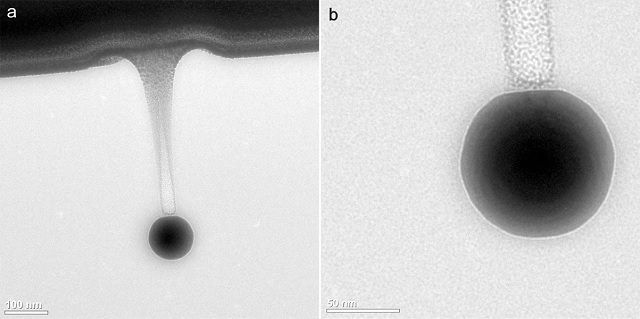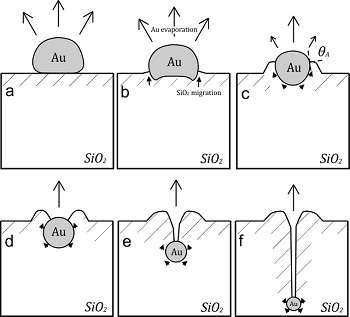Jan 26 2015

Scientists from the University of Twente have developed spherical gold particles which are capable of drilling a nano-diameter tunnel in a ceramic material upon heating.
The research published in Nano Letters holds promise for the integration of nanopores in chips for DNA analysis. Researcher Lennart de Vreede coated a silicon dioxide surface with a large quantity of gold microscopic discs. Upon heating for a few hours, the gold tends to penetrate the material which is perpendicular to the surface, in the form of nanometer-sized spheres.
A 800nm long tunnel is generated in the surface following 9 hours of heating such that the gold can fully penetrate the material. In general, such results can be obtained only using complex techniques. All nanotunnels thus produced can form a sieve. The tunnel is closed at one end so as to create molds for nano structures.

When the heating temperatures reach their melting point, gold discs of 1µm diameter tend to form spheres rather than spreading over the surface. The discs push ways silicium dioxide that causes a circular ridge which is a tiny dam-like structure.
The spheres become smaller due to evaporation while entering the silicon dioxide. This results in a continuous movement of spheres within silicon dioxide.
In DNA-sequencing applications, nucleotides, the building blocks of DNA can be analyzed by pulling a DNA-string via one of the nanochannels.
De Vreede’s recent experiments on silicium nitride denote that he is looking forward to use this “gold method” to other ceramic materials also.
The research work was carried out at the BIOS Lab-on-a-chip group which is a division of two research institutes of the University of Twente, Institute for Nanotechnology and the MIRA Institute for Biomedical Technology and Technical Medicine, and the MESA.